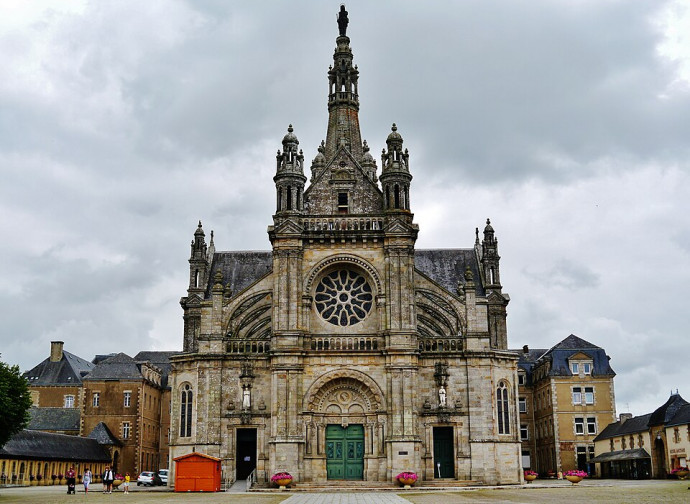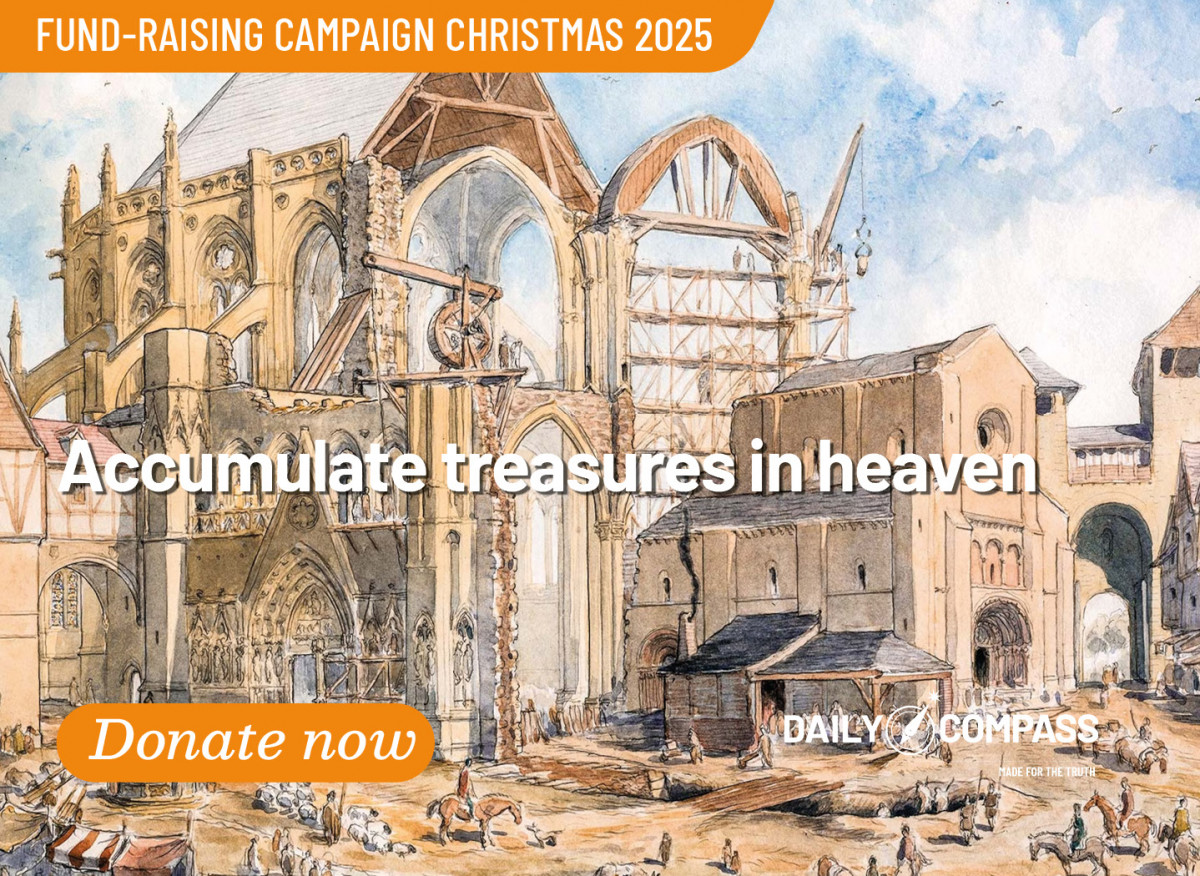When Sainte-Anne-d'Auray converted the ‘devil of Brittany’
The Breton sanctuary is celebrating the 400th anniversary of the apparitions of Saint Anne to Yves Nicolazic. The story of the Breton sanctuary, since its origin, has been one of reconstruction and rebirth, against all odds, which includes the remarkable conversion of the 'devil of Brittany'.

"The Most High deigns to reveal the ineffable mysteries of the Kingdom of Heaven first to the little ones. For this reason, by the grace of God, Saint Anne, mother of the most sweet Virgin Mary, appeared miraculously to the peasant Yves Nicolazic, renewing the spiritual flame of the people of Brittany.' This is how Pope Leo XIV recounts the origins of the Sainte-Anne-d'Auray sanctuary in his letter to Cardinal Robert Sarah, who travelled to Brittany as the Pope's special envoy to attend the 400th anniversary celebrations of the apparitions, which occurred between 1623 and 1625. A chapel was built on the site — or rather, as we shall see, rebuilt — and was replaced in the 19th century by the present basilica. In 1996, the basilica received a visit from its most illustrious pilgrim: Saint John Paul II.
In the summer of 1623, Yves (or Yvon) Nicolazic, a wealthy and devout farmer from the village of Keranna, received the first of a number of visions from Saint Anne. The first took place in his home, where he saw a blinding light in which he could only make out a hand holding a torch. The phenomenon occurred several times thereafter. However, the 'decisive' apparition took place at a fountain, where Nicolazic saw a majestic lady dressed in white, holding a torch. He saw her again later, but it was not until the night of 25–26 July 1624 speaking in Breton that she revealed her name to him: 'Me zo Anna Mam Mari' ('I am Anna, the mother of Mary') and added, 'Tell your rector that in the field called Bocenno, before there was a village, there once stood a chapel dedicated to my name. It was the first in the whole country. It has been in ruins for 924 years and 6 months. I want it to be rebuilt as soon as possible, and I want you to take care of it because God wants me to be honoured there. God wants you to come there in procession...'
To confirm her request, during a subsequent apparition in March of the following year, she asked him to bring his neighbours with him. She led them to the Bocenno field, where they found a buried statue of Saint Anne, a 'relic' and proof of the existence of the ancient place of worship. The first Mass celebrated on the site on 26 July 1625 officially marked the beginning of devotion and pilgrimages. Yves and his wife Guillemette, who were unable to have children, had four: Yves (like his father) and Julien died at an early age, while Jeanne and Sylvestre survived; the latter became a priest. Meanwhile, the farmer had become a builder and director of the reconstruction of the chapel, but then stepped aside to escape the curiosity of the pilgrims. He died on 13 May 1645, saying: 'I see the Blessed Virgin and Saint Anne, my good patroness!'
Interestingly, there is a 'story within the story' that took place in the shadow of Saint Anne just twelve years after these events. This extraordinary story, which we will only briefly mention here, concerns the conversion of the 'devil of Brittany'. This was the name given by the people to Pierre Le Gouvello, lord of Keriolet, who was something of an alter ego of Yves. The former was as meek and devout as the latter was dissolute and evil. Needless to say, Pierre mocked all those devotees who went to pray to Saint Anne. His complete devotion to evil was exceptional in two ways: he never refused alms, but was indignant when a beggar offered him prayers in return; and, however contradictory it may seem, he had maintained the habit, perhaps since childhood, of saying a Hail Mary every day.
The story recounts that Pierre Le Gouvello was eventually saved by a vision of hell; he saw the place destined for him if he didn’t change his ways. But at the time, the knowledge did not suffice: after spending two months in a charterhouse, he left and resumed his life, assuming worse behaviors than before. It was not until he witnessed some exorcisms that he changed. Once again, it was the devil who confronted him about his condition through the mouth of a possessed woman. It revealed the state of his soul and said he would have taken him to hell, if it had not been for his daily habit of reciting the Hail Mary. This time, Pierre's change was genuine and radical. He became a penitent and a pilgrim, retiring to his castle where he mainly received religious people and the poor. He lived as a religious man himself. He later became a priest and even an exorcist — he, who had once been a slave to the devil. Saint Anne, once mocked, became the recipient of his donations to the poor and his continuous pilgrimages until his death: he went there every Wednesday and Saturday, celebrating Mass and distributing alms. It was here that, on 8 October 1658, he returned his soul to God, having previously risked selling it to the devil.
Pierre Le Gouvello's extraordinary conversion, the grace of having children bestowed upon Yves and Guillemette after a long wait, and the reconstruction of the lost temple itself all testify that Sainte-Anne d'Auray has been a story of rebirth ever since its very beginnings, even when all seemed lost. "God's plan cannot fail," emphasises Bishop Raymond Centène of Vannes in his pastoral letter for the sanctuary's jubilee: 'After 924 years and six months, the chapel has been rebuilt. Faced with current secularisation, we may sometimes feel powerless, thinking that Christianity has had its day. Just as the Temple in Jerusalem was rebuilt after the exile, so the Chapel of Keranna was rebuilt and rebuilt again after the Revolution (among whose illustrious victims was the original statue of St Anne, burned during the sacking of the church). Monsignor Centène reminds us that it is 'God's plan' that 'unfolds in human history, through the upheavals of that same history, but without ever losing its power'.
What saves the world is the man who worships Christ
In the West, religion is often viewed as an activity that serves human well-being. However, God is not at our service. We must put Him first and live to worship and serve Him. This is what the world needs. (Cardinal Sarah's homily at Saint Anne d'Auray, France.)
- When Sainte-Anne converted the ‘devil of Brittany’, by Stefano Chiappalone


